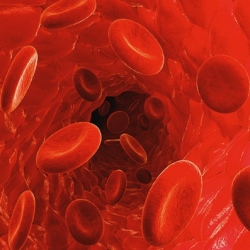
Across the world, heart disease is the leading cause of death for both men and women. Understandably then, the development of treatments for and preventative steps to combat heart disease is a top priority for scientists, and there are virtually no constraints on how these scientists attempt to achieve these goals.
A new medical technique developed at Detroit’s Wayne State University, for instance, attempts to tackle heart disease in a new and unusual way: with a 3D printer.
A research team led by Mai Lam, Ph.D. has developed a way to engineer scalable and customizable vascular grafts using a 3D printer, a breakthrough that could lead to new and improved ways of treating coronary artery disease. Dr. Lam is an assistant professor in the Wayne State University Department of Biomedical Engineering and the Cardiovascular Research Institute in the WSU School of Medicine.
Coronary artery disease occurs when plaque builds up inside the coronary arteries, weakening the heart muscle over time and potentially leading to heart failure and arrhythmias. One of the most popular treatments for the disease involves harvesting a patient’s blood vessels for bypass surgery.
This technique, however, has its flaws. For one, identifying that a patient may need bypass surgery comes with the obvious implication that the patient is already sick, and this means that their blood vessels are often not viable for harvesting. And even when they are, the donor site often causes additional harm, and can also lead to infection.
Lam and her team have developed a new 3D printing method which supposedly allows for the creation of new, healthy blood vessels that could be used to safely treat heart disease. The technique, which has been dubbed the “Ring Stacking Method,” would allow medical professionals to create grafts in a variety of sizes over a period of just two to three weeks.
The technique gets its name from the way in which the grafts are assembled. In the Ring Stacking Method, rings of tissue of the desired cell type can be created using two 3D printed “guides”: 3D printed center posts, which control the diameter of the lumen (the hole in the center of the ring), and 3D printed outer shells which dictate vessel wall thickness (the thickness of the ring itself).
The tissue then forms itself in rings in accordance with the 3D printed guides, and these rings can be stacked to create a tubular construct, mimicking the natural form of a blood vessel.
The researchers used a MakerBot Replicator Mini 3D printer to create the 3D printed guides, after designing the 3D models for them in Blender. The guides were then 3D printed in PLA, before being soaked for 30 minutes in an ethanol solution to make them sterile.
“The method of engineering vascular grafts that my research team at Wayne State University developed may lead to a profound difference in the way coronary heart disease is treated,” Lam said.
“In light of the potential impact this method may have in treating a global leading cause of death, we elected to publish our experiment in JoVE Video Journal so that clinicians around the world will have access to a video demonstration detailing how to replicate this important technique.”
